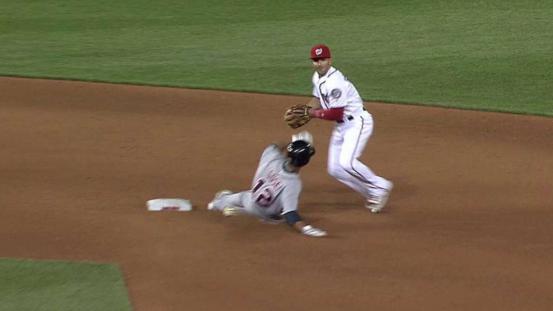- Commissioner’s statement on Ventura, Marte
- Ronnie O’Sullivan: Masters champion ‘felt so vulnerable’ in final
- Arron Fletcher Wins 2017 WSOP International Circuit Marrakech Main Event ($140,224)
- Smith challenges Warner to go big in India
- Moncada No. 1 on MLB Pipeline’s Top 10 2B Prospects list
- Braves land 2 on MLB Pipeline’s Top 10 2B Prospects list
- Kingery makes MLB Pipeline’s Top 10 2B Prospects list
- New Zealand wrap up 2-0 after Bangladesh implosion
- Mathews, Pradeep, Gunathilaka to return to Sri Lanka
- Elliott hopes for rain for Poli
Adjustment improves slide rule
- Updated: May 13, 2016

Rule 6.01 (j), the so-called “Chase Utley slide rule,” has been clarified by Major League Baseball. In the process, the rule has been made more workable.
The adjusted rule was in reaction to Utley’s slide in last year’s Division Series that broke the leg of then-Mets shortstop Ruben Tejada. Nobody could quibble with the motivation: protecting the health and well-being of middle infielders.
But in practice, the rule tended to punish both the guilty and the innocent. This became clear in an opening series this season between the Astros and the Brewers.
The Astros were rallying in the ninth inning when Jose Altuve hit a ball softly to Milwaukee second baseman Scooter Gennett. The runner on first, Colby Rasmus, was forced to make a late slide on a close play at second. His momentum carried his slide beyond the bag, and thus was, according to the new rule, an illegal slide.
There was very minimal contact between Rasmus and Milwaukee shortstop Jonathan Villar, who was covering second. The Brewers had no play on Altuve at first. In fact, Villar made no throw to first. Still, the rule was applied, and because Rasmus’s slide had gone beyond second base, interference was called; the Brewers were awarded a double play. The game ended on that note.
But Major League Baseball recently informed managers in a memo that the interpretation of the rule was being altered. Now, there will be no automatic double play called if the runner does not actually impede the fielder.
This is more sensible, less debatable. A handy example of the new interpretation occurred Tuesday …
continue reading in source mlb.mlb.com
